One of the most common questions I get asked at the end of a lesson with a scoli client, is “what are the best exercises for scoliosis?” After years of working with countless clients and reading through mounds of research, here’s what I’ve learned are the best exercises for scoliosis:
- Traction
- Side Shift
- Side Bend
- Bird Dogs with a mirror under you
- Ball Release
Why are these exercises the best for scoliosis? People with scoliosis have very specific needs when it comes to using exercise to help their scoliosis. Because the spine in someone with scoli is not in the middle of the body, the muscles on either side of it are unevenly developed 1. Therefore, exercises need to help balance out the uneven muscles. This means some exercises may only be done on one side for a period of time until a more balanced state between the muscles is achieved.
A scoli body also needs core strength 2. You can think of the core as a brace around the midsection of the body. The stronger the muscle brace, the more stable the spine will be. No need for a hard-plastic brace when you have a strong, natural brace made out of muscle. This means core strengthening exercises particularly benefit people with scoliosis. Each of the exercises below puts one or both of these concepts into action or gives the body relief by creating length. (These exercises and descriptions are taken from Analyzing Scoliosis, The Pilates Instructor’s Guide to Scoliosis. They are also in my new book, I Have Scoliosis; Now What? along with MANY more.)
1. Traction
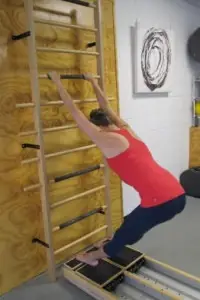
A traction involves a pull, and it require assistance form a weight, such as gravity, on the body. For all of us with scoliosis, we know how heavenly a nice traction feels.
A spinal traction is the first exercise I have clients with scoliosis do when they have a Pilates session with me. It’s also the exercise I commonly give as homework for my clients, which gives them spinal compression relief throughout the day.
To perform a traction, hold onto an object that is firmly secured and pull the hips back and away from the hands. Allow the body to be pulled down with gravity, allowing the spine to decompress. Take a few really deep breaths here, and allow all the tight muscles and fascia to begin releasing and finding length. You can hold onto a reinforced closet rod, a door jamb, a kitchen sink, a bunk bed ladder, or even a ballet bar.
2. Side Shift
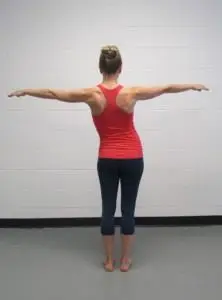
Research has shown that rib cage side shift exercises can stabilize scoliosis curvature progression 3, 4.
Before you start attempting to do this exercise, you must figure out a few things about your scoliosis. You need to know how your scoliosis presents itself, or what it looks like. To do this, check out the Starting Point Series videos. These short, free videos will teach you how to figure out what your scoliosis looks like and how to draw a picture of it. From there, you can determine the concave and convex part of each of your curve(s). If you need help figuring concavity vs. convexity, you can read this blog post.
A side shift exercise opens the concave part of a scoliotic curve. To do this, you’ll shifting the body laterally in the direction of the concave curve. When envisioning a side shift, think of the rib cage like a typewriter. There should be no side bending involved; it’s simply the rib cage sliding toward the concave side.
To perform a side shift, slide your ribcage in the direction of the concave part of the biggest curve in your ribcage.
3. Side Bend
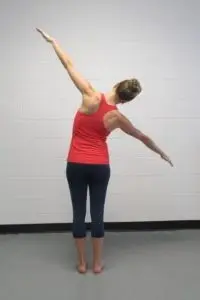
Research shows that a scoli curve decreases when the body bends sideways towards the convex portion of a curve 5. Thus, you want to bend in the direction that will open the concave part of a curve.
Please make sure to keep the difference between a side bend and a side shift straight as they are used to work different parts of your curves. I’d highly suggest you create and regularly reference a diagram sketch, which the Starting Point Series shows you how to make. I also recommend drawing how your body will look when you do both a side bend and a side shift. This will give you a great visual to confirm you’re doing the exercises the correct way and on the correct sides.
4. Bird Dogs with a mirror under you

Doing work on all fours can be a great way to work on core strength and is a favorite when I teach clients. Using a mirror will also greatly increase your proprioception, or knowing where you are in space. Research shows that people with scoliosis lack proprioception, so the more help we can give scoli bodies to understand where it is in space, the more effective the exercising will be 6, 7.
To do this exercise go on all fours, tighten your abdominals without shifting your back, and slowly raise one arm without moving anything else in your body. Lower that arm and raise the other. Lower that arm and raise one leg. Then lower that leg and raise the other leg.
Once you’ve mastered moving one limb at a time without moving anything else in your body, then raise one arm and the opposite leg without wobbling. Repeat on the other side.
You can practice this exercise with me in my workout videos Hard Core Scoli and The Scoliosis Series: Band Workout.
5. Ball Release
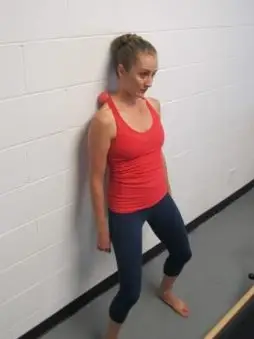
Many people with scoli have muscle spasms in their overworked convex muscles, so it’s imperative to release those. A cheap and simple way to massage out tight muscles at home is to find a fairly hard ball that fits in the palm of your hand (a tennis ball works well) and use it to release your tight tissue. In my studio I like using a pinky ball to release the tight tissue.
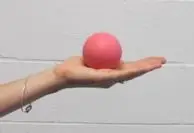
To release the tissue you can lay on a hard surface with the ball under the part of your body that is tight and breathe through the discomfort until the spasm subsides. You can also stand against a wall with the ball between you and the wall and do the same. Make sure, however, that you don’t place the ball directly on a bone, as that won’t release the tight tissue and will likely be very uncomfortable.
Despite having worked with scoliosis clientele for over a decade, having scoliosis myself, dancing with the Radio City Rockettes, owning a Pilates studio specifically geared towards helping those with scoliosis, and having created books, an app , workout videos, online workshops, and in-person workshops—you don’t have to take my word how important exercise is for scoliosis.
Take Usain Bolt’s word. Yes, Usain Bolt, the fastest man in the world, has scoliosis. In his book Usain Bolt, Faster Than Lightning, My Story Usain recounts the continual struggles scoliosis gave him. You know how he stopped the cycle of pain and injury? Through back and core strengthening and regular massage.
Above I gave you the 5 best scoliosis exercises that you can do at home to start strengthening and mobilizing your spine. Be diligent with your exercises and commit yourself to caring for your scoliosis—this is how you will see the most improvement.
For more scoliosis resources including an in-person workshop to help your scoliosis, a book with more in-depth scoliosis exercises, scoliosis workout videos, and a free resource page check out spiralspine.com.
Erin Myers is an international presenter on scoliosis and founder of Spiral Spine, a company designed to enrich the lives of people with scoliosis. She’s also created a number of scoliosis resources including the books I Have Scoliosis; Now What? and Analyzing Scoliosis, the scoliometer app (iPhone and Android) and many videos. She owns Spiral Spine Pilates studio in Brentwood, TN, which allows her to actively pursue her passion of helping those with scoliosis through Pilates, which she has been doing for over 15 years.
Sources
- Yeung, K. H., et al. “Magnetic Resonance Imaging-Based Morphological Change of Paraspinal Muscles in Girls With Adolescent Idiopathic Scoliosis.” Spine, vol. 44, no. 19, 2019, pp. 1356-1363, https://journals.lww.com/spinejournal/Abstract/2019/10010/Magnetic_Resonance_Imaging_Based_Morphological.8.aspx. Accessed: 19 October 2019.
- Gür, Gözde, et al. “The Effectiveness of Core Stabilization Exercise in Adolescent Idiopathic Scoliosis: A Randomized Controlled Trial.” Prosthetics and Orthotics International, vol. 41, no. 3, 13 Sept. 2016, pp. 303-310., doi:10.1177/0309364616664151.
- Hawes, Martha C. “The Use of Exercises in the Treatment of Scoliosis: An Evidence-Based Critical Review of the Literature.” Pediatric Rehabilitation, vol. 6, no. 3-4, 1 Aug. 2003, pp.171-182., doi:10.1080/0963828032000159202.
- Maruyama, T., et al. “Side Shift Exercise and Hitch Exercise.” Studies in Health Technology and Informatics, no. 135, Feb. 2008, pp. 246-249., https://www.ncbi.nlm.nih.gov/pubmed/18401095. Accessed: 19 October 2019.
- Beuerlein, Murray J., et al. “Changes in Alignment of the Scoliotic Spine in Response to Lateral Bending.” Spine, vol.28, no. 7, 1 Apr. 2003, pp. 693-698., doi:10.1097/01.brs.0000051921.29087.c1
- Blecher, Ronen, et al. “The Proprioceptive System Masterminds Spinal Alignment: Insight into the Mechanism of Scoliosis.” Developmental Cell, vol. 42, no. 4, 21 Aug. 2017, pp. 388-399., doi:10.1016/j.devcel.2017.07.022.
- Blecher, Ronen, et al. “The Proprioceptive System Regulates Morphologic Restoration of Fractured Bones.” Cell Reports, vol. 20, no. 8, 22 Aug. 2017, pp. 1775-1783., doi:10.1016/j.celrep.2017.07.073.
52, 46,47,45,30,31
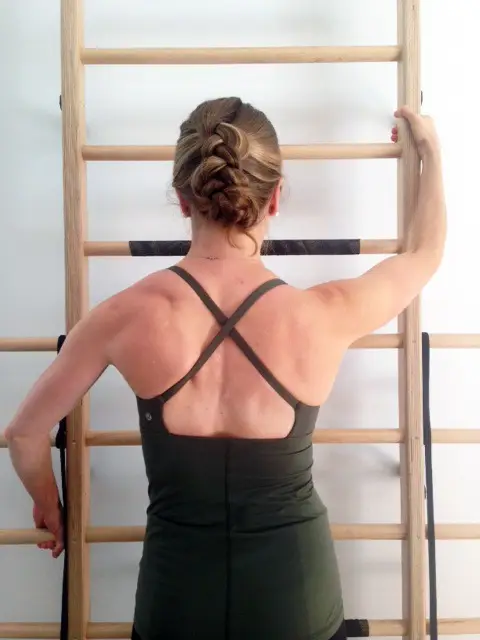
12 Responses
Hello, if i provide a picture of my scoliosis xray could i get a dedicated physical therapy sheet, thanks in advance
Hi Alex,
My staff and I would love to help you. Please contact us and we can set up a virtual lesson to get you exercises for your scoli.
Blessings,
Erin
This scoliosis or scoliosis info I read tonight sounds like the top of line info. Im very much interested in getting treatment for this type of produce in order to defeat my scoliosis problem. Please me how to contact a trainer to help my back problem. Thank you.
Hi Carole,
It’s great to hear you’re ready to address your scoli. Please send us an email through the contact page at SpiralSpine.com (this website) and Spiral’s client care coordinator will get back with you on how to start working out with one of Spiral’s trainers.
Blessings,
Erin Myers
I just had my first scoliosis X-ray. It shows a thoracolumbar curve apex to the left at T12. Do you have any online videos for this kind of scoliosis? For some reason I am not able to type any capital letters in my comment.
Thank you Erin. Im going to try to find someone in my area to give me some clear guidance. Im 65, so this is degenerative scoliosis. Prior back X-rays 3 years ago show a straight spine.
Hi Terri,
Thanks for reaching out. Yes, it does sound like it degenerative scoli since a spinal Xray 3 years earlier showed no scoli. I’d highly suggest you get the book I Have Scoliosis; Now What? It’s available on amazon. In chapter 13 it goes through what research shows are some roots of scoli, and what nutrients those with scoli are usually deficient in (all back in research). The chapter guides you towards blood work labs to get done to check certain levels. I’m guessing you have osteoporosis and certain nutrients really need to get addressed.
I hope you can find someone in your town to help you, but that can be difficult depending on where you live. My staff and I do virtual lessons with scoli beauties all over the world on a weekly basis and would love to have one with you to help you make a plan, and figure out padding, homework, etc for you. Great job being proactive with your scoli. Keep going!
Erin Myers
Good Morning Erin. Thank you for all the useful information on your website. One quick question on traction. Do you consider hanging inverted in a yoga sling to be an acceptable form of traction?
Many thanks.
Hi Heather,
That is an AWESOME form of traction!
Erin
Thank you for sharing these exercises! I’ve been struggling with scoliosis for years, and it’s great to see practical advice tailored for us. I can’t wait to try them out and incorporate them into my routine. Your insights are much appreciated!
We’re glad that you appreciated Erin’s 5 favorite scoli exercises!
Hey, thanks for sharing and references
We’re happy to help, Abdullah!